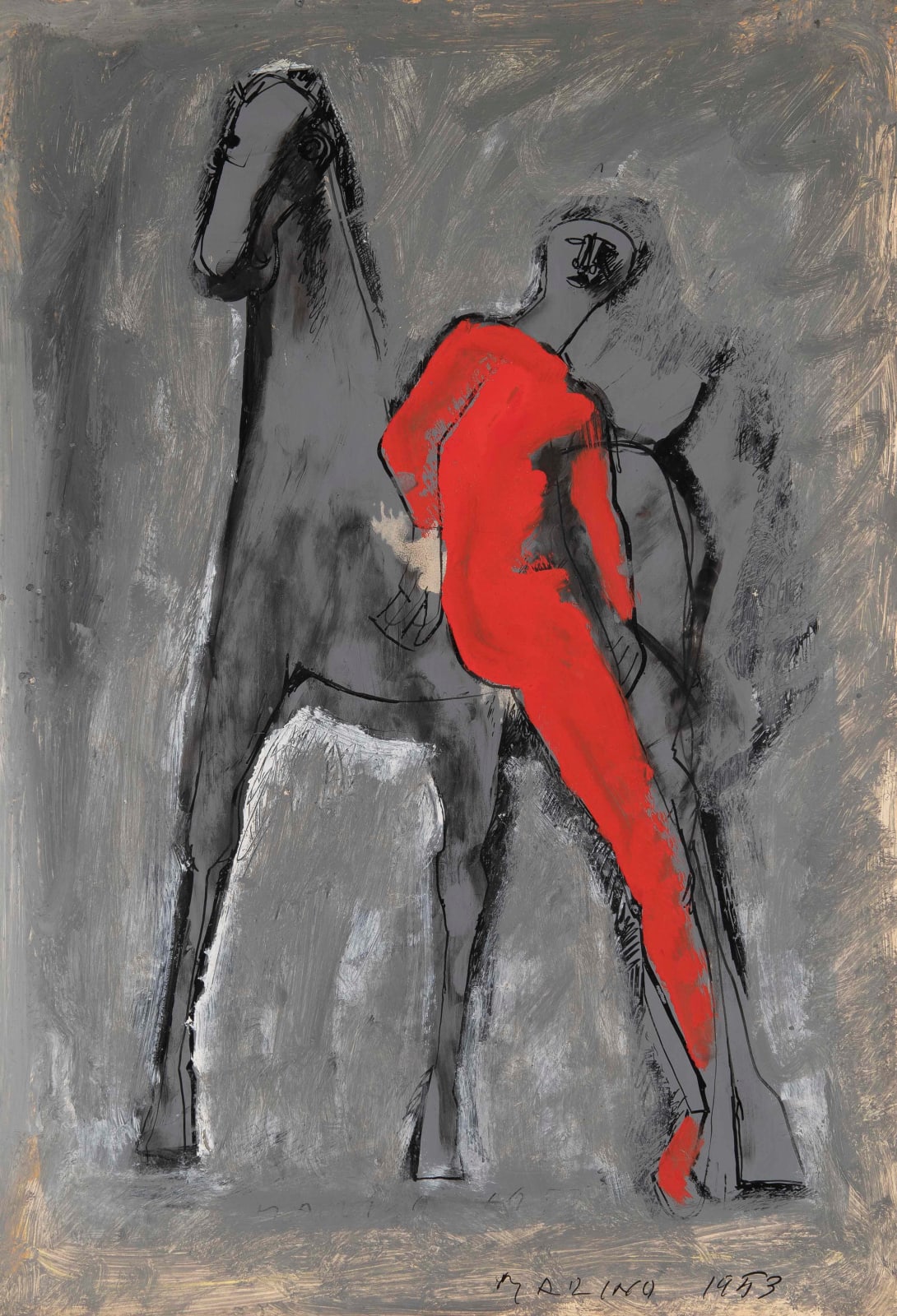Marino Marini
Throughout Classical and Renaissance art, equestrian representations were associated with notions of power and dominance. It was believed that if a man could control a horse then he could control a people and a nation. Marini studied much Etruscan work, as well as that of early Renaissance artists Pisano and Donatello. One of Donatello’s most famed sculptures is the equestrian portrait of ‘Gattamelata’ in Padua. Marini takes the strength and expressive power of Donatello’s work, yet interprets the classical theme with a fiercely modernist touch.
This ‘Horse and equestrian in red’ sits perfectly between Marini’s poised Cavaliere of the 1930s and his later works where figures are depicted tumbling off their horses. In ‘Horse and equestrian in red’, the man and beast are disjointed, so much so that the figure is twisted and turned away from his horse. Oblivious of the creature beneath him, the rider is focused upon his own anxieties. Working at a time when society was still coming to terms with the ramifications of World War II, Marini used this image to show man and nature being out of harmony.
‘Horse and equestrian in red’ was purchased directly from Marini by Teto Ahrenberg, a famed Swedish businessman and supporter of the arts, whose collection included works by such titans as Picasso, Matisse, Chagall, Braque, Fontana, Rauschenberg, Giacometti, Moore and Le Corbusier.
Born in Pistoia, Italy, in 1901 Marini studied at the Academy of Fine Arts, Florence in 1917. His works are held in many leading international collections such as Peggy Guggenheim Collection, Venice, Tate Collection, London, Hirshhorn Museum, Washington, National Galleries of Scotland, Edinburgh and Museum of Modern Art, New York. The Museo Marino Marini in Florence is entirely dedicated to the artist’s work.
Provenance
Ulla and Teto Ahrenberg, Sweden (acquired directly from the artist)
Private Collection, Switzerland (by descent from the above)
Exhibitions
Lund, Konsthall Lund, Moderne Verdenskunst fra Ahrenbergs Samling i Stockholm, 1961 (travelled to: Fyns, Stiftsmuseum, 1961, Fredriksbergs, Fredriksbergs Ràdhus, 1961)
Dusseldorf, Kunsthalle Düsseldorf, Der sammler Theodor Ahrenberg und das atelier
in chexbres, 1977, no.154
Lausanne, Musée des beaux-arts, Fantaisie équestre: Exposition réalisée
à l'occasion du championnat du monde de dressage, 1982, no.211
Gothenburg, Göteborgs Konstmuseum, Ahrenberg Collection, 1993
(travelled to: Linköping, Ostergotlands Lansmuseum, 1993, St Ingbert, Museum
Sandt Ingbert, 1993 - 4)
Belmont, Fondation Deutsch, Collection Ahrenberg, 1994
Mons, Musée des Beaux-Arts, Hej Teto: Collection Ahrenberg, 1998,
p.51, illus.



